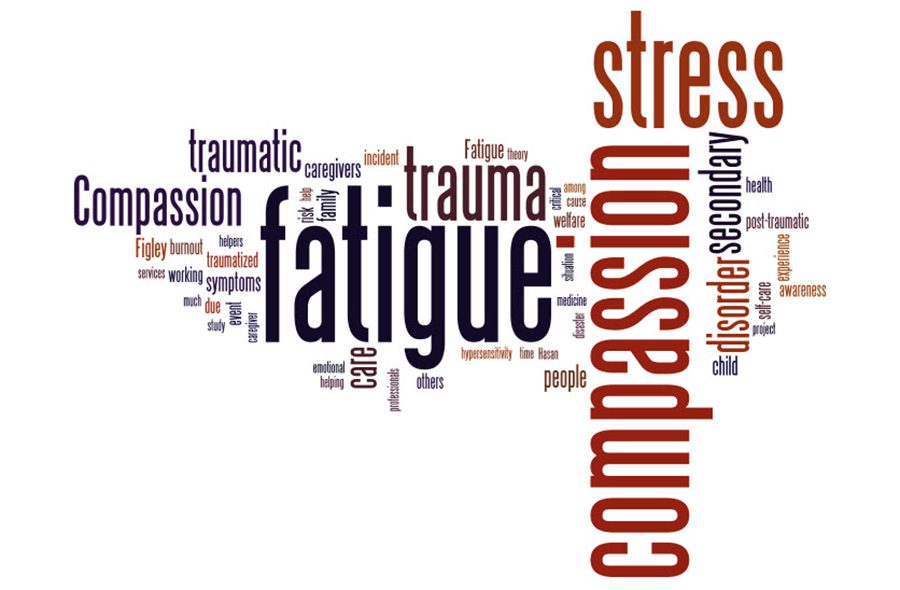Compassion Fatigue
You Are Not Alone
By Michael P. Mansfield AAS, LMT, CNMT
Helping or being assistance to others who have suffered trauma is an honorable means of serving others. However, in providing support for a trauma survivor does not come without cost. Health professionals, caregivers, and emergency responders (police, firefighters, EMS) are at risk of suffering trauma vicariously. Compassion Fatigue, known as a secondary post-traumatic stress disorder, arises from working with those who have suffered from traumatic life events. No one is immune Secondary Traumatic Stress/Vicarious Traumatic Stress (STS/VTS).
In discussing the dynamics of STS, one must first explore transference and counter-transference. Generally these terms relate to the field of psychotherapy, but for all intents and purposes, health professionals, caregivers, and emergency responders fulfill a quasi-role of therapist when assisting others who have suffered trauma.
By definition, transference is the identification of childhood emotions of the client mistaken as emotions toward the therapist. These emotions can be friendly, hostile or ambivalent. Counter-transference is much the same, where the therapist identifies with similar emotions and mistakes these emotions as those associated with the client.
Whether providing care for a recent trauma survivor or one who is experiencing Post Traumatic Stress Disorder (PTSD), Trauma Specific Transference (TST) can occur: where the individual assisted places the caregiver into the role of rescuer, perpetrator, or supporter. Likewise, the caregiver may fall into the role of fellow survivor, supporter, or rescuer through counter transference.
Those suffering from STS, exhibit symptoms such as hopelessness, a decrease in experiences of pleasure, constant stress and anxiety, sleeplessness or nightmares, and a pervasive negative attitude. Often self-medicating with illicit drugs and/or alcohol enters into the picture in order to abate the emotional impact experienced. In turn, the STS sufferer experiences a decline in physical health and damage to personal and professional relationships, including a decrease in productivity, the inability to focus, and the development of new feelings of incompetency and self-doubt.
Treatment of STS includes professional counseling, attending support groups, realizing the impact of working with traumatized individuals, attending workshops, limiting exposure to traumatic materials (e.g. books, television shows, and movies), exercising spiritual practices such as prayer, and staying connected to others.
Prevention of STS begins with maintaining clear boundaries between home and work. Additional prevention measures are scheduling time off work, engaging in regular physical activity, journaling, pursuing hobbies, meditation, listening to music, socializing with family and friends, informal group therapy with coworkers, eating a balanced diet, getting plenty of sleep, performing group guided exercise (Yoga/Thai Chi/Zumba), deep breathing exercises, and receiving professional massage therapy and/or Chiropractic sessions.
Amongst the aforementioned prevention techniques, deep breathing is free, can be performed at any time, and impacts the entire body exponentially. Deep breathing, correctly utilizing the diaphragm, affects every system of the body directly. Proper utilization of the diaphragm (diaphragmatic breathing aka belly breathing) releases pressure from the cervical and lumbar spine, freeing up entrapped nervous tissue, reversing the fight or flight environment perceived by the brain, and thus reducing anxiety and depression.
Diaphragmatic breathing (aka belly breathing) is simple to perform, yet awareness needs to be developed. Most people either shallowly or chest breathe and quite often, and need to retrain themselves to make full use of their diaphragm. This is carried out by placing your hands on your abdomen, breathing in through the nose until the abdomen extends fully, and passively exhaling the breath through the mouth. Through continued practice, this form of breathing becomes more automatic, becoming a first line of defense in the prevention if Secondary Traumatic Stress.

